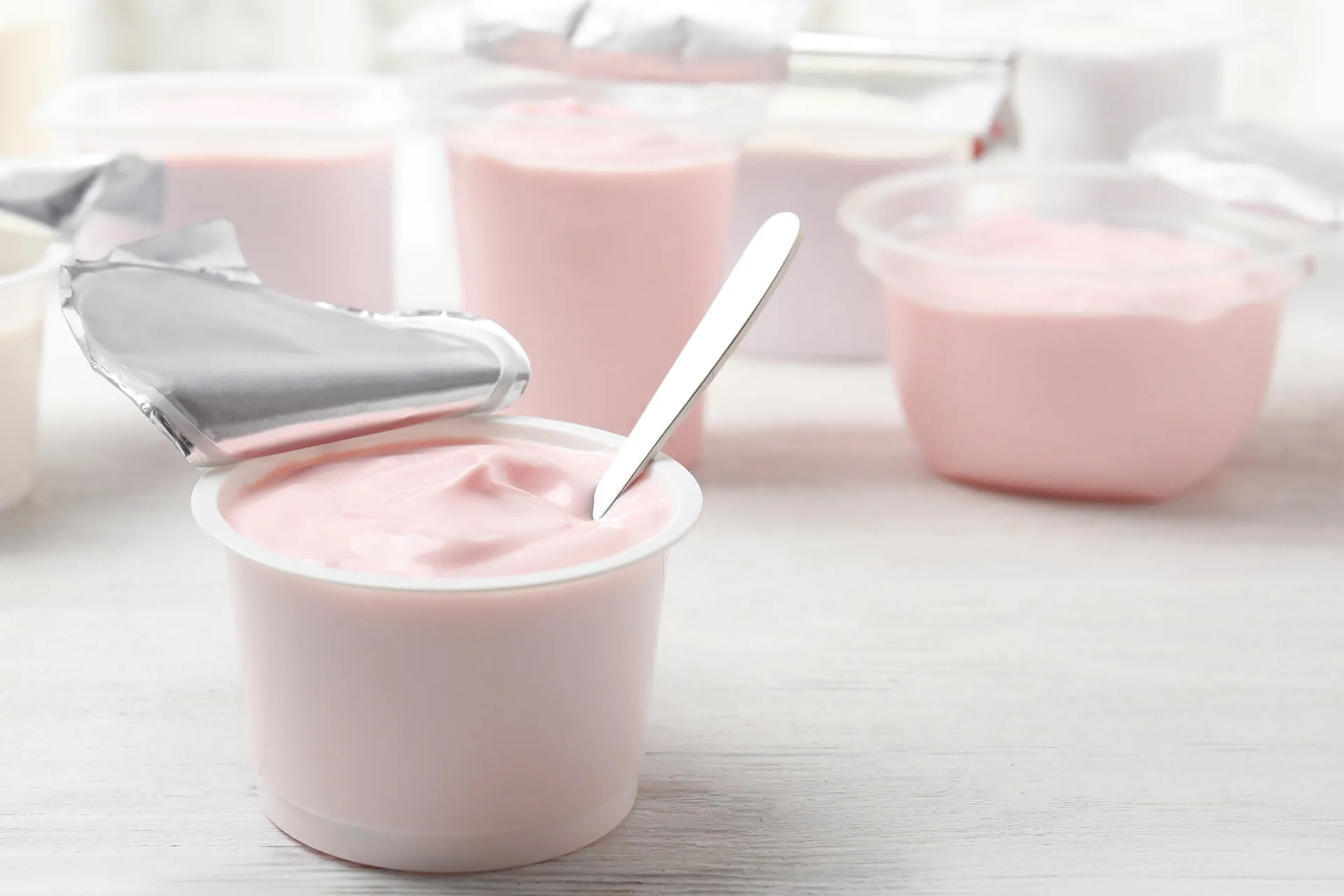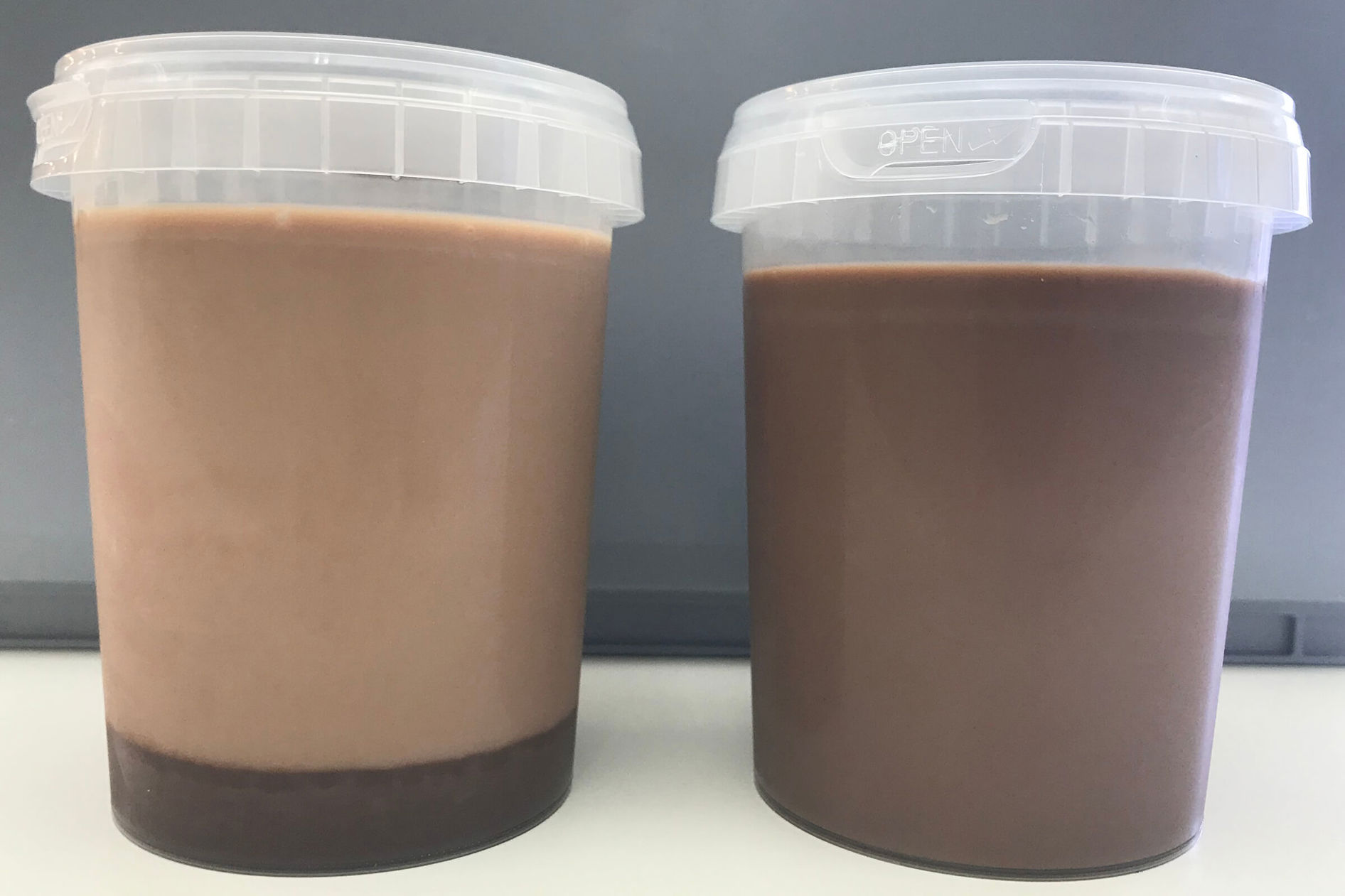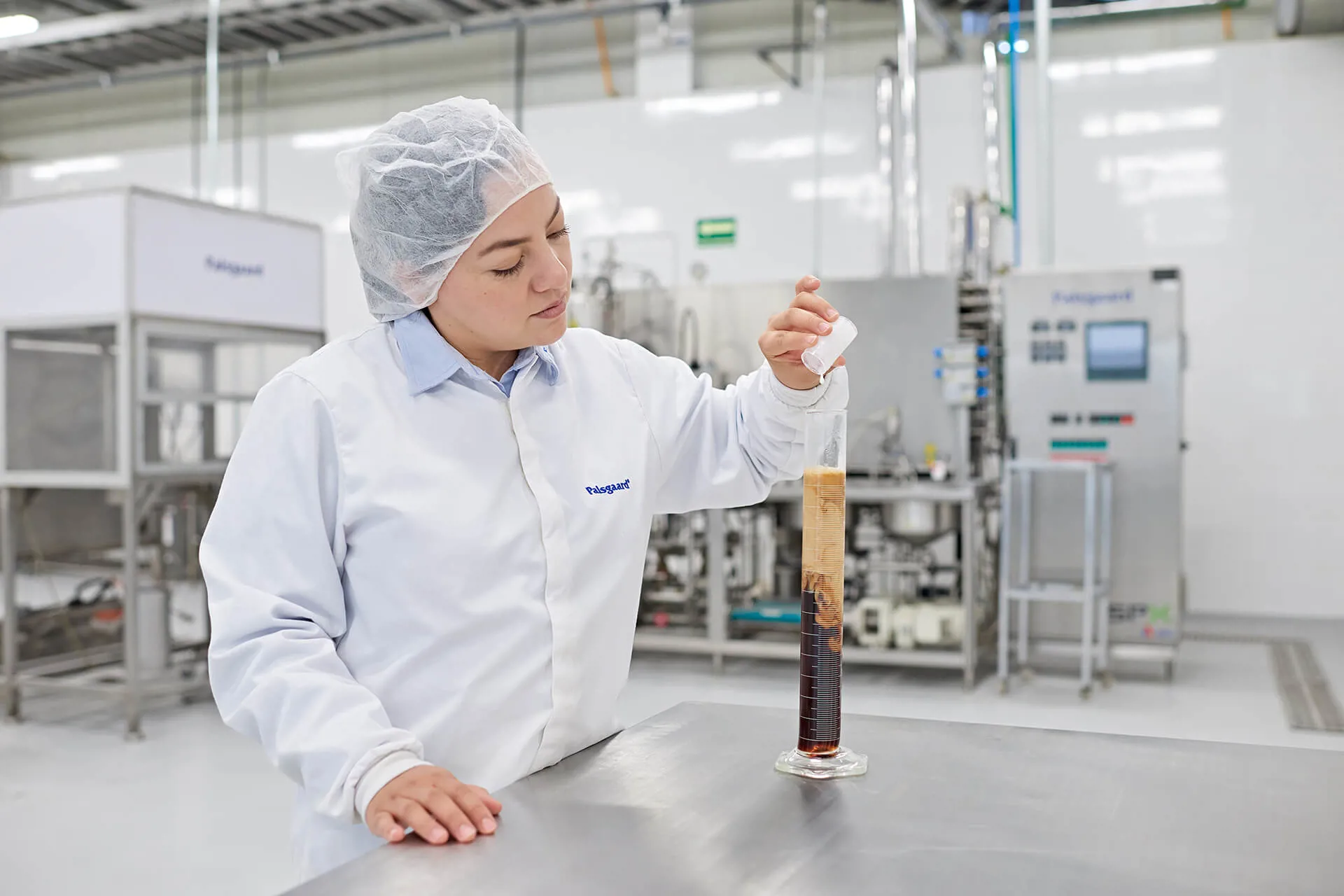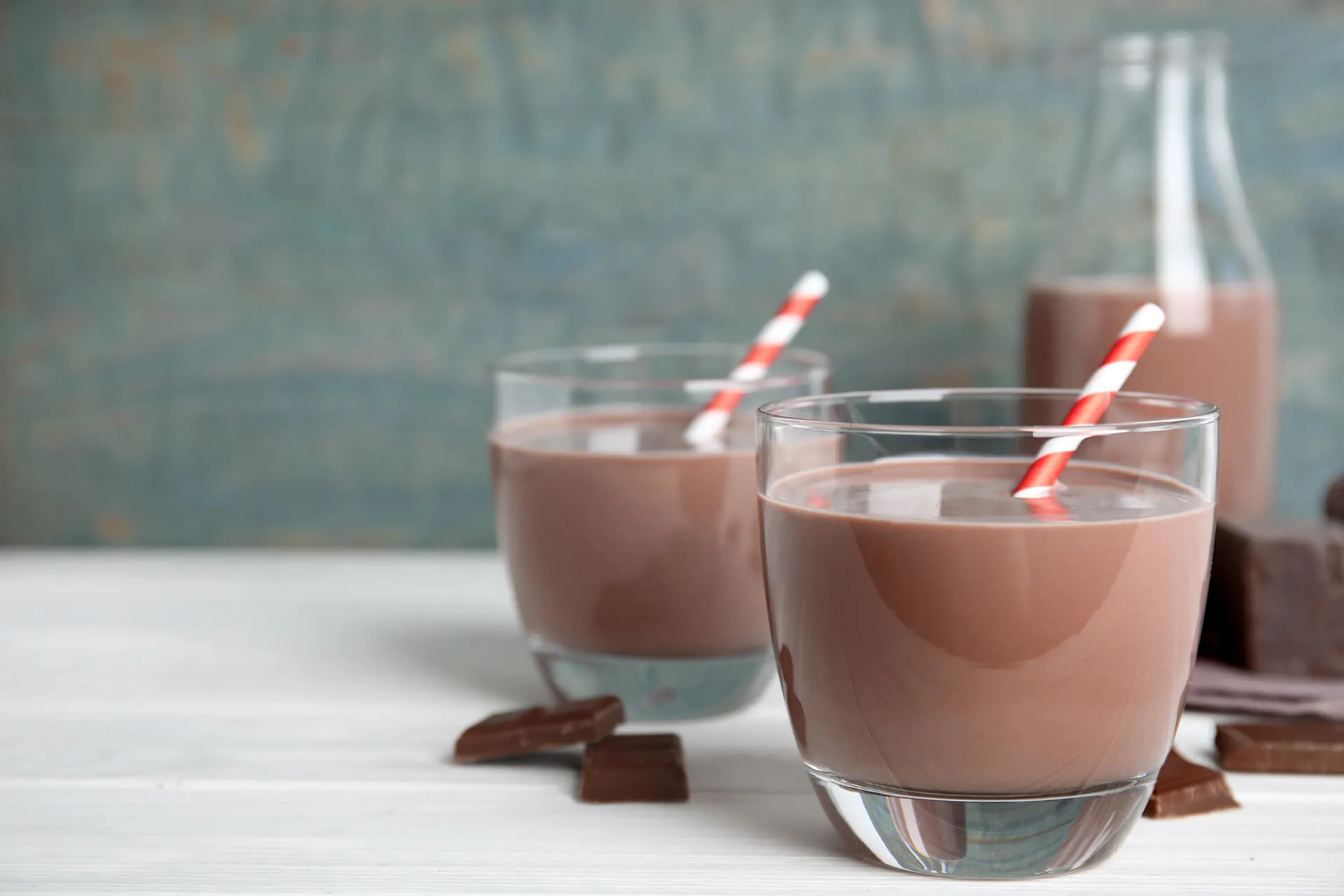
TECHNICAL ARTICLE
TECHNICAL ARTICLE
Chocolate milk is arguably more popular on a global scale than any other flavour of milk, but sedimentation from cocoa particles has long been a problem for manufacturers. Luckily, Palsgaard has plenty of experience in this arena, and here Thomas Hvid Kruuse shares his expert advice and things to consider when trying to prevent sedimentation in chocolate milk.
"You can under-stabilise the product with your emulsifier-stabiliser system, but you can also over-stabilise it, and that is equally as bad.
If you over-stabilise then you will most likely see a jelly-like or lumpy texture appearing in the chocolate milk and when you look at the bottle you often see a marbled effect to the drink. This can happen with a very small difference in dosage, so it’s really important for us to get the dosage exactly right."
— Thomas Hvid Kruuse, senior Application Specialist, Palsgaard A/S

The big difference between chocolate milk and other types of dairy products is the insolubility of the cocoa particles, according to Thomas Hvid Kruuse, Palsgaard’s Senior Application Specialist for Dairy and Ice Cream.
He says: “Cocoa particles are very visible in the milk because cocoa is insoluble. It means that very quickly you will see cocoa particles sink to the bottom as sediment if your system doesn't work.
“It’s always been a challenge for chocolate milk compared with other kinds of flavoured milk, and for this reason, this flavour of milk is widely used for testing the properties of new stabilisers, because it’s easy to see when the stabiliser is working.”
From a consumer’s point of view, chocolate milk with a layer of sediment at the bottom of the bottle is not visually appealing. It also affects the taste, because the beverage can be very thin with very little chocolate flavour, as most of it has sunk to the bottom.
Thomas notes that some producers have tried marketing tactics to help alleviate this problem.
He says: “There are a few manufacturers which have added a message to the label of the bottle, recommending consumers shake the drink vigorously before consuming it. In fact, there is one brand from Denmark, Cocio, which has managed to make this a product feature where part of their brand is the concept of shaking the drink first. It is a good product, but you actually have to shake it quite a lot to get the cocoa particles to mix properly with the milk.
“With most chocolate milks there are stabilisers added in with the cocoa powder to create a homogeneous type of drink.
“Palsgaard has created emulsifier and stabiliser systems specifically for chocolate milk because, without stabilisers, sedimentation can occur within hours. It's quite quick.”

Thomas and his team’s first step in finding the right system for any chocolate milk recipe is a conversation with the customer. In these initial stages, it’s important for them to understand who the end consumer is likely to be, and any other constraints with the production process or recipe. Regional differences can also be a big factor.
He says: “If you are making chocolate milk from fresh milk then this can differ a lot from region to region but also, if you plan to make it from powder mixed with water, then the product can vary in terms of the different types and quality of the milk powder used.”
Sedimentation begins the moment the drink has been produced but it can be more noticeable and dramatic the longer it sits on the shelf.
For Thomas, understanding the requirements of the recipe – including how long it is likely to sit on the shelf – will help him to determine which Palsgaard system is the most appropriate.
And to minimise sedimentation, the aim for Thomas is to ensure the cocoa particles are held tightly in suspension, preventing them from migrating to the bottom of the container. This is called a ‘thixotropic’ network and it refers to the fact that if, for example, the beverage is stirred, the network will be broken down, but it will tend to revert back to its pre-stirred state once the disturbance stops.
From Palsgaard’s point of view, understanding the customer’s requirements from the initial stages is hugely important because it helps when working out the appropriate stabiliser dosage amounts. In addition, when working with carrageenan a great deal of caution is required, because the margin between underdosing and overdosing is very narrow, as Thomas explains.
He says: “You can under-stabilise the product with your emulsifier-stabiliser system, but you can also over-stabilise it, and that is equally as bad.
“If you over-stabilise then you will most likely see a jelly-like or lumpy texture appearing in the chocolate milk and when you look at the bottle you often see a marbled effect to the drink. This can happen with a very small difference in dosage, so it’s really important for us to get the dosage exactly right.”
Calculating the dosage of carrageenan depends on several factors including the fat content of the milk. Higher fat demands less stabiliser, for example.
The cocoa content is also important because a higher level of cocoa also requires less stabiliser.
And finally, the heat treatment makes a difference here too. Sterilisation for example demands less stabiliser than UHT treatment, which again requires less stabiliser than a pasteurised product.
An alternative stabiliser base to carrageenan is Microcrystalline cellulose (MCC). This doesn’t react with the milk proteins in the same way as carrageenan and so the risk of separation due to overdosing is less. However, overdosing can result in high viscosity.
Palsgaard has three key products to help alleviate sedimentation in chocolate milk.
Thomas explains: “Each of these three has different properties. Stabilisers can be made from carrageenan, MCC or often a combination of both. All of these options can help manufacturers to avoid sedimentation and they will provide consumers with the right mouthfeel for chocolate milk and ultimately, a good drinking sensation.
“We also work with different processing methods. The biggest market is UHT products and then there are pasteurisation and sterilised products, also known as retorted products. For the latter, we have Palsgaard® ChoMilk 170, which is an MCC-based product.”
The company also has Palsgaard® ChoMilk 150, which is an example of a carrageenan-based product for chocolate milk. This one is cost-effective and it can be used in both pasteurised and UHT products.
Completing the line-up is Palsgaard® ChoMilk 173, which contains both carrageenan and MCC. It is recommended for chocolate milk drinks with low protein content.
Thomas says: “It’s a very flexible product and besides offering a creamy mouthfeel, with Palsgaard® ChoMilk 173 you don't have to worry about storage conditions or extreme temperatures. It can also be used in pasteurised and UHT chocolate milk.”

Palsgaard has supplied the dairy industry with high-quality emulsifiers and stabilisers for decades.
Thomas adds: “Over the years we have built up a lot of knowledge here at Palsgaard and so now we know a lot about chocolate milk. When I see a certain composition, I will always calculate its level of solids and protein content, and I know what to recommend. I then work out the correct dosage levels, which is very important.”
Palsgaard’s equipment allows the company to work with pasteurised, UHT-treated and sterilised products and to make shelf-life studies covering the entire shelf-life of chocolate milk.
Thomas has also worked with customers to help to create cost-effective recipes.
He says: “Some of our customers, particularly those in Africa, like to use cheap whey powders instead of skimmed milk powder because the latter is quite expensive.
“So I have helped these customers to develop cost-effective recipes, together with Palsgaard’s stabliser systems.”
All the products in the Palsgaard® ChoMilk portfolio can help to create a uniform product without visible creaming and sedimentation and with a pleasant creaminess and mouthfeel.

TECHNICAL ARTICLE

TECHNICAL ARTICLE

TECHNICAL ARTICLE

TECHNICAL ARTICLE

TECHNICAL ARTICLE